1940 Buick 51
October 2020 - Tear down part 1
Return to Home
Return to Resources
Return to Buick 51 page
The Buick had sat for nearly 3 years while I was practicing my restoration skills on the 1953 Rover P4 and finally found the time to start stripping down the Buick.
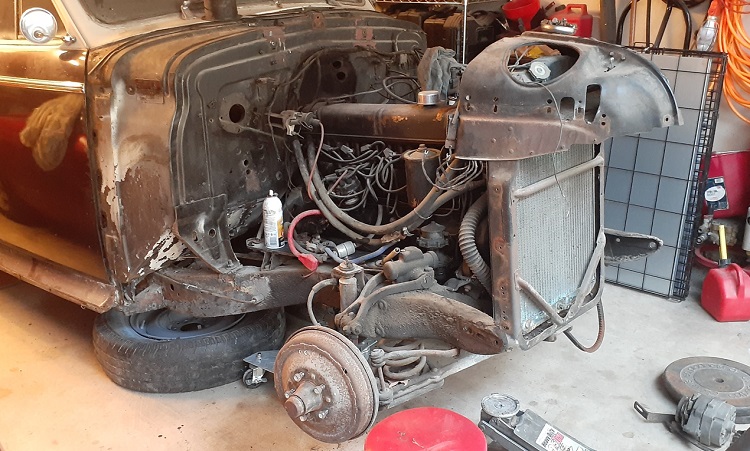
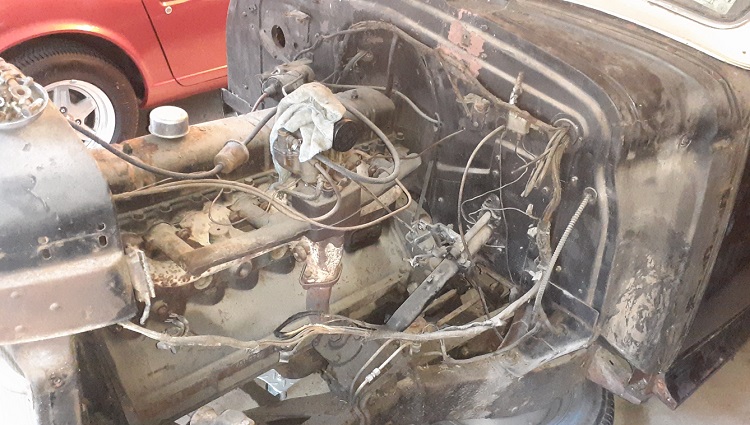

A previous owner apparently had welded on brackets to the frame and lower control arms to attach modern shock absorbers rather than maintain the original hydraulic lever action dampers.
Before pulling the engine off the frame, I took the opportunity to see if it would turn over and start. Adding a little gas and starting fluid in the carburetor body and cranking for the first time in many years, the engine started and ran for a few seconds!
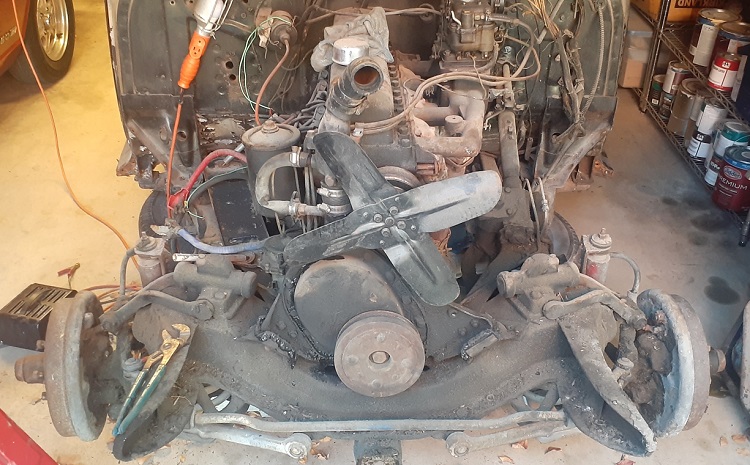
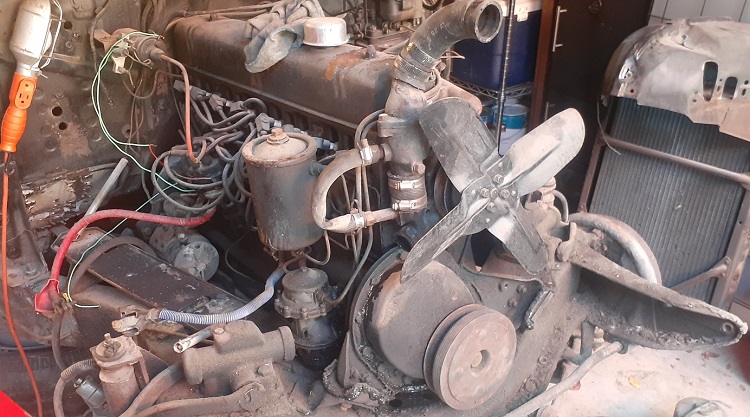
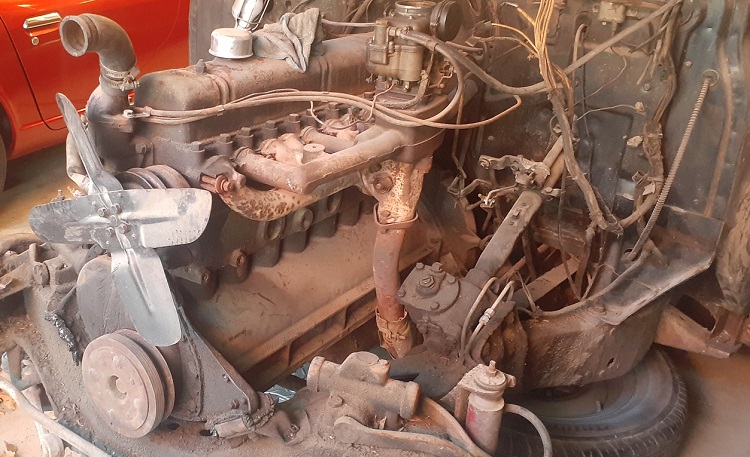
More views of the engine after removing the front radiator. The radiator frame is structurally held in place by both front fenders and a large nut affixing it to the body frame at the bottom.
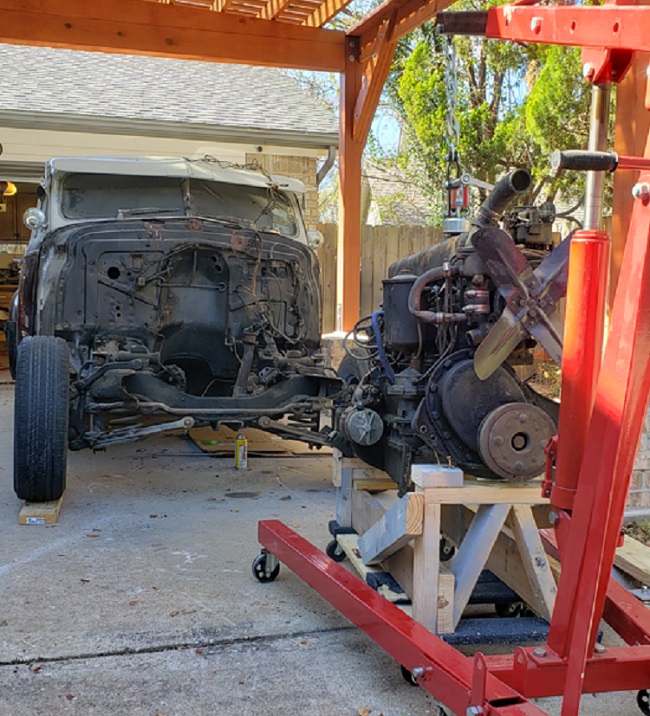
The engine is attached to a hoist by attaching at least 2 of the head bolts. I opted to use 4 of the head bolts to be safe. The engine and transmission altogether weights about 800 pounds.
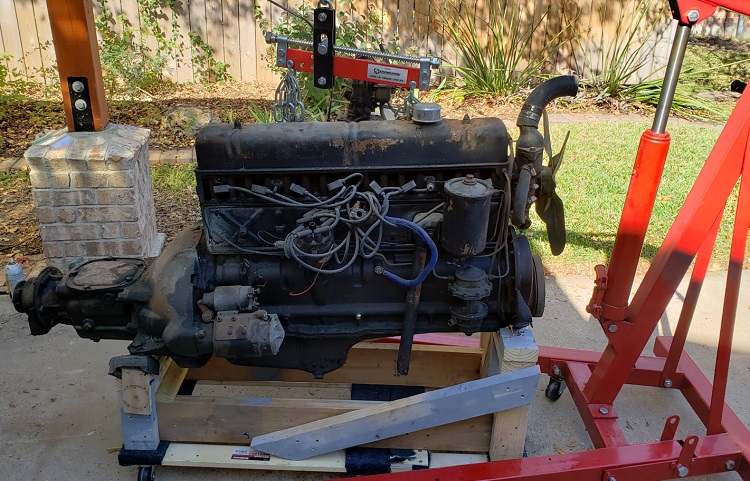
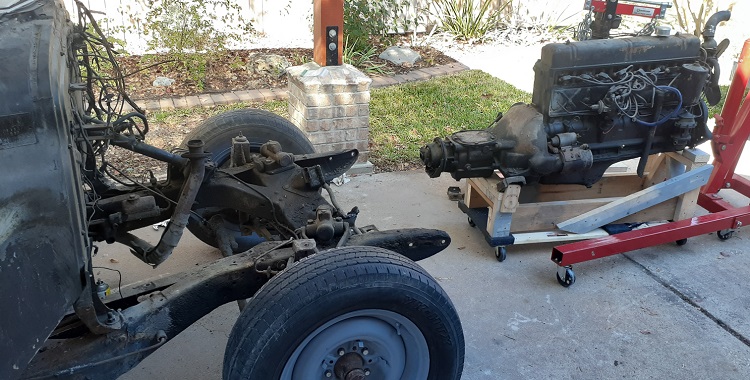
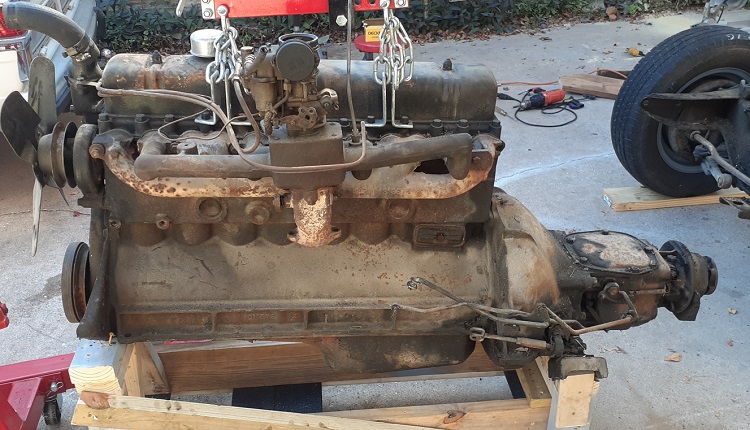
A homemade engine dolly was made out of wood and two furniture dollies to move the engine after it was removed from the car. The engine and transmission are held in place by 5 mount points; two are at the front of the engine, two on the transmission bell housing, and one at the rear of the transmission near the torque tube (driveshaft) attachment.
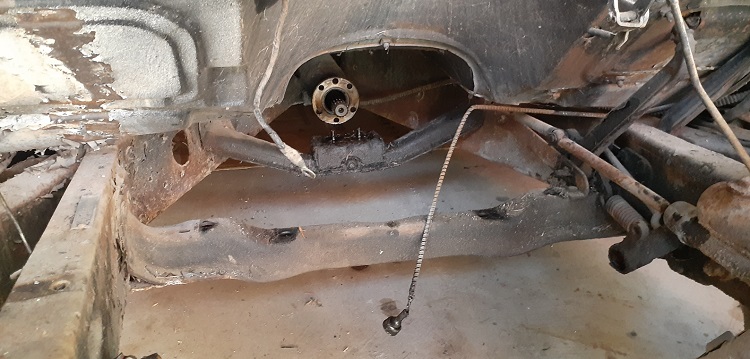
All 1940 Buicks used a torque tube drivetrain configuration. This design allowed Buick to use coil springs in the rear and transfer the rear wheel torque forces to the frame through the tube to the transmission crossmember. The torque tube is attached to the transmission via 4 bolts.